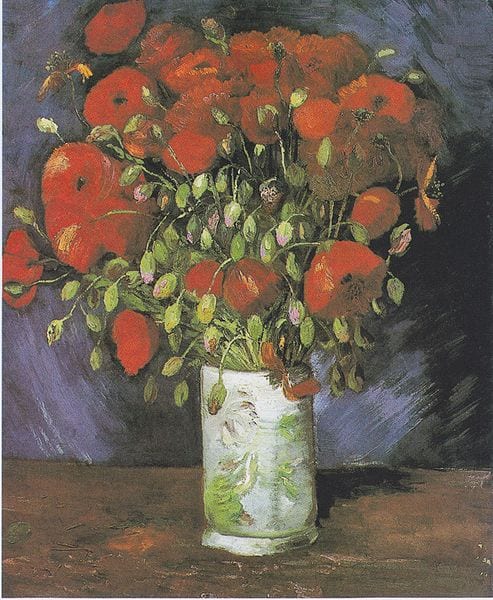11 November is Remembrance Day, which marks the signing of the Armistice that brought an end to the First World War. The poppy became the official symbol of Remembrance Day in 1921, following the arresting image of the flowers growing on the front lines after so much death and destruction, in the John McCrae poem In Flanders Fields. It was Moina Michael—a professor at the University of Georgia—who, after reading the poem, campaigned to adopt the poppy as a symbol of remembrance. At this time of year, poppies are worn in the UK, Canada, Australia, New Zealand, Hong Kong, Pakistan and the US.
Vincent van Gogh was not alive to witness the horrors of the First World War in his country—he died aged thirty-seven in 1890—but his iconic Vase with Red Poppies, a study he painted in Paris, reveres the poppy for its transcendental beauty, vibrancy and unmistakable colour.






